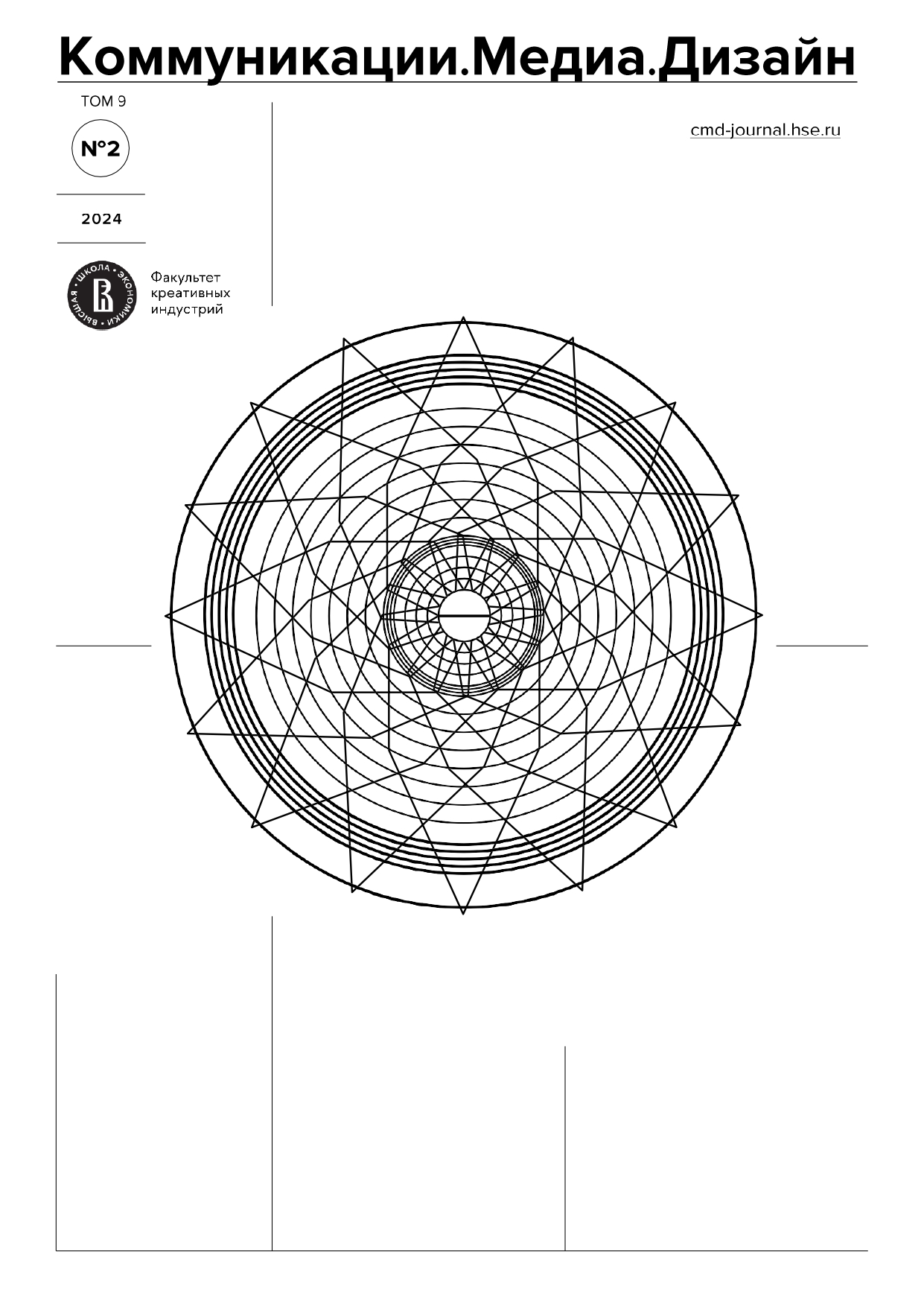Digital Reading and Transmedia Creativity as Elements of Multiliteracy: Experience of Dialogue Between Researchers and Educators
Abstract
The article presents the results of a project that examines current reading practices in the context of the media sphere. The article is based on expert interviews with teachers, writers, university professors, and the authors of projects that combine digital tools and work with texts. The authors characterize current reading practices and propose a definition of digital reading. The article substantiates the approach to modern reading as a practice of participation and co-creation. It is noted that through the actualization of reading experience, literacy develops both in the traditional sense and multimedia and transmedia literacy.
ACKNOWLEDGEMENT
The study is based on materials collected within RFBR grant No. 19-29-14155, completed in the spring of 2023. The empirical part was collected within the framework of the project "Digitalization of Reading in the Context of Current Research and Educational Practices" at the Faculty of Creative Industries, HSE University.
Downloads
References
Архангельский, А. Н., Новикова, А. А. (2023). Педагогика трансмедийного творчества: школьный литературный канон в контексте цифровизации культуры. Издательство «Канон+». РООИ «Реабилитация».
Виола, Л. (2010). Крестьянский бунт в эпоху Сталина. Коллективизация и культура крестьянского сопротивления. Российская политическая энциклопедия (РОССПЭН).
Выготский, Л. С. (1996). Педагогическая психология. Педагогика-Пресс.
Грисволд, В., Мак-Доннел, Т., Райт, Н. (2010). Чтение и класс читателей в ХХI веке. Новое литературное обозрение, (2). https://magazines.gorky.media/nlo/2010/2/chtenie-i-klass-chitatelej-v-xxi-veke.html
Добрякова, М. С., Фрумин, И. Д. (2019). Из доклада: универсальные компетенции и новая грамотность. Образовательная политика, 79(3), 63–72. EDN: QTQQEW
Казакова, Е. И. (2016). Тексты новой природы: проблемы междисциплинарного исследования. Психологическая наука и образование, 21(4), 102–109. EDN: XWOOLF https://doi.org/10.17759/pse.2016210410
Лотман, Ю. М. (1970). Структура художественного текста. Искусство.
Мангель, А. (2020). История чтения. (М. Юнгер, пер.). Издательство Ивана Лимбаха.
Поварнин, С. (1971). Как читать книги для самообразования. Издательство «Книга».
Саймон, Н. (2017). Партиципаторный музей. Ad Marginem.
Уланов, А. (2013). Липовецкий, М., Боймерс, Б. Перформансы насилия: Литературные и театральные эксперименты «Новой драмы», Знамя, (3). https://magazines.gorky.media/znamia/2013/3/m-lipoveczkij-b-bojmers-performansy-nasiliya-literaturnye-i-teatralnye-eksperimenty-novoj-dramy.html?ysclid=lxvwseir21378940105
Черный, Ю. Ю., Мурована, Т. А. (Ред.). (2021). Медийно-информационная грамотность в цифровом мире: как научить учителей. Институт ЮНЕСКО по информационным технологиям в образовании, Программа ЮНЕСКО «Информация для всех». EDN: MGXVTX
Шариков, А. В. (1993). Медиа-образование, Российская педагогическая энциклопедия (cc. 555–556). Научное издательство «Большая российская энциклопедия». EDN: UWYLJI
Шартье, Р. (2006). Письменная культура и общество. Новое издательство.
Шафир, Я. (1924). Газета и деревня. Красная новь.
Эльконин, Д. Б. (1999). Психология игры. (2-е изд.). Гуманит. изд. центр ВЛАДОС.
Bolin, G. (2010). Digitization, Multiplatform Texts, and Audience Reception. Popular Communication, (8), 75–76. https://doi.org/10.1080/15405700903502353
Brockmeier, J., Olson, D. R., & Wang, M. (Eds.). (2002). Literacy, Narrative and Culture (1st ed.). Routledge. https://doi.org/10.4324/9781315029009
Carpentier, N. (2009). The Discursive-Material Knot: Cyprus in Conflict and Community Media Participation. https://doi.org/10.7146/tjcp.v6i1.117323
Carpentier, N. (2009). Participation Is Not Enough: The Conditions of Possibility of Mediated Participatory Practices. European Journal of Communication, 24(4), 407–419. https://doi.org/10.1177/0267323109345682
Cavallo, G., Chartier, R. (Eds.) (1999). A History of Reading in the West. L. G. Cochrane (Trans.). University of Massachusetts Press.
Chen, D.-T., Wu, J., Wang, Y. (2011). Unpacking New Media Literacy. Systemics, Cybernetics and Informatics, 9(2), 84–88. https://www.semanticscholar.org/paper/Unpacking-New-Media-Literacy-Chen-Wu/9856a2e6e36b932b8af51b2e9ae211f7a35242b2
Cope, B., Kalantzis, M. (2009). “Multiliteracies”: New Literacies, New Learning. Pedagogies: An International Journal, 4(3), 164–195. https://doi.org/10.1080/15544800903076044
Leu, D. J., McVerry, G. J., O'Byrne, I. W., Kiili, C., Zawilinski, L., Everett-Cacopardo, H., Kennedy, C. & Forzani, E. (2011). The New Literacies of Online Reading Comprehension: Expanding the Literacy and Learning Curriculum. Journal of Adolescent & Adult Literacy, 55(1), 5–14. https://doi.org/10.1598/JAAL.55.1.1
Fernandez, R. (2001). Imagining Literacy: Rhizomes of Knowledge in American Culture and Literature. Austin: Univ. Texas Press.
Gardies, R. (Ed.). (2007). Comprendre le cinéma et les images [Understanding cinema and images]. Armand Colin.
Kress, G. (2003). Literacy in the New Media Age. Routledge. https://doi.org/10.4324/9780203299234
Kristeva, J. (1986). Word, dialogue and novel. The Kristeva Reader (pp. 34–61). Basil Blackwell.
McEneaney, J. E. (2006). Agent-Based Literacy Theory. Reading Research Quarterly, 41(3), 352–371. https://doi.org/10.1598/rrq.41.3.3
Olson, D. R., Torrance, N. (Eds.). (2001). The Making of Literate Societies. Maiden, Blackwell. https://doi.org/10.1111/j.0964-0282.2007.00009_14.x
Palmer, D. (2004). Participatory Media: Visual Culture in Real Time. University of Melbourne.
Rumelhart, D. E. (1980). Schemata: the building blocks of cognition. In R. J. Spiro, B. Bruce & W. Brewer (Eds.), Theoretical Issues in Reading Comprehension: Perspectives from Cognitive Psychology, Linguistics, Artificial Intelligence, and Education (pp. 33–58). L. Erlbaum Associates. https://doi.org/10.4324/9781315107493-4
Eleá, I., Lothar, M. (Eds.) (2017). Transmedia storytelling as a narrative expansion: Interview with Carlos Scolari, Young & Creative: Digital Technologies Empowering Children in Everyday Life (pp. 125–129). Nordicom. https://www.nordicom.gu.se/sites/default/files/kapitel-pdf/10_scolari.pdf
Transmedia Literacy. Exploiting transmedia skills and informal learning strategies to improve formal education. https://transmedialiteracy.org

